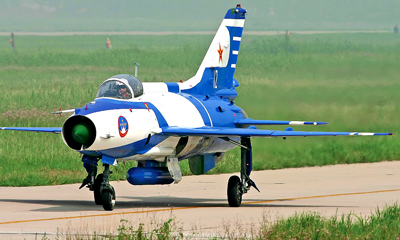INDIAN ARMED FORCES CHIEFS ON OUR RELENTLESS AND FOCUSED PUBLISHING EFFORTS

The insightful articles, inspiring narrations and analytical perspectives presented by the Editorial Team, establish an alluring connect with the reader. My compliments and best wishes to SP Guide Publications.

"Over the past 60 years, the growth of SP Guide Publications has mirrored the rising stature of Indian Navy. Its well-researched and informative magazines on Defence and Aerospace sector have served to shape an educated opinion of our military personnel, policy makers and the public alike. I wish SP's Publication team continued success, fair winds and following seas in all future endeavour!"

Since, its inception in 1964, SP Guide Publications has consistently demonstrated commitment to high-quality journalism in the aerospace and defence sectors, earning a well-deserved reputation as Asia's largest media house in this domain. I wish SP Guide Publications continued success in its pursuit of excellence.
- A leap in Indian aviation: Prime Minister Modi inaugurates Safran's Global MRO Hub in Hyderabad, Calls It a Milestone
- All about HAMMER Smart Precision Guided Weapon in India — “BEL-Safran Collaboration”
- India, Germany deepen defence ties as High Defence Committee charts ambitious plan
- True strategic autonomy will come only when our code is as indigenous as our hardware: Rajnath Singh
- EXCLUSIVE: Manish Kumar Jha speaks with Air Marshal Ashutosh Dixit, Chief of Integrated Defence Staff (CISC) at Headquarters, Integrated Defence Staff (IDS)
- Experts Speak: G20 Summit: A Sign of Global Fracture
Region - A Gathering Force

Many lessons are to be learnt from PLAAF’s implementation of acquisition programme and China’s capability-enhancement to produce its own aircraft.
Genesis of the People’s Liberation Army Air Force (PLAAF) can be traced back to the Nanyuan Flying Group formed in the summer of 1949. As the People’s Liberation Army’s (PLA) air arm, PLAAF, equipped with 40 aircraft, was responsible for the defence of the then proposed capital of China, Beijing.
Some historical perspective is necessary for a clearer understanding of the PLAAF. China has a strong sense of history and its strategic culture has evolved over a long period of dynastic cycles, where stable dynasties preceded internal fragmentation and disorder. From such disorder rose a leader who unified the country under a strong central authority. Mao Tse Tung’s rise followed one such period of disorder. Guided by the Marxist-Leninist philosophy, Mao consolidated political and military power, and, more importantly, moulded the People’s Army into an organ of the political party. Like in the Soviet Union, the party’s writ was paramount in the PLA and its air arm. Loss of influence in the 19th century, with Britain taking control of Hong Kong and five other ports, the invasion by Japan in the 20th century followed by conflicts with its neighbours, including Russia, India and Vietnam, and wars against the forces of the US and South Korea, compelled the PLA and the PLAAF to give primacy to defending the country, thereby evolving into regional defence forces. Border security became the primary mission and as a historical corollary, this has long-term implications for India; China’s territorial claims became non-negotiable.
The Soviet Union extended assistance to the fledgling PLAAF in the early 1950s and helped the People’s Republic set up aircraft production facilities. PLAAF pilots were trained in Soviet tactics and some took part in the Korean War against the USAF. By the late 1950s, Chinese factories were licence-producing aircraft in large numbers. These were MiG-15 (J-2), MiG-15Bis (J-4), MiG-17 (J-5) and the MiG-19 (J-6). The break in relations with the Soviet Union dealt a double blow to China. The aircraft industry nearly collapsed and a new and powerful enemy appeared on the northern flank, though the PLAAF was not involved in any border skirmishes with the Soviets. The industry began to recover by 1965 and China produced its first indigenous fighter, the J-8, a mix and match of various Soviet designs.





